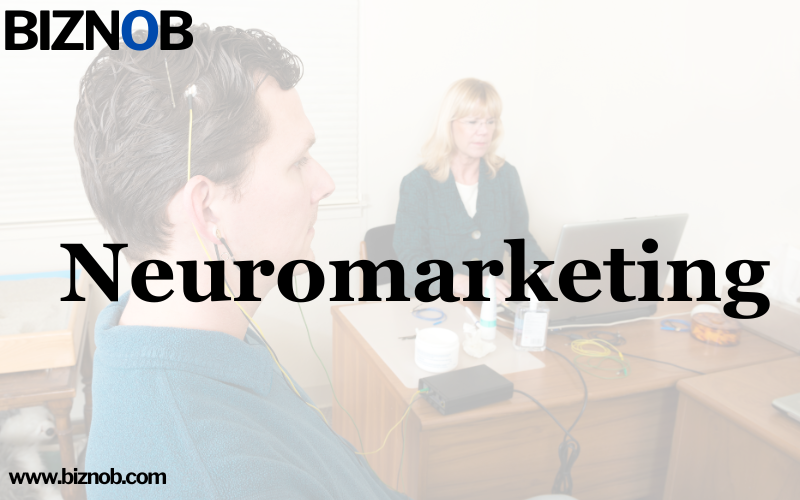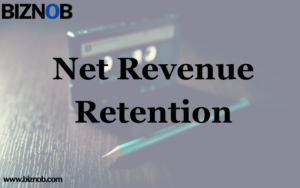What does neuromarketing mean?
Neuromarketing is the study of understanding and changing people’s behavior using ideas from the brain and marketing. Businesses can learn more about how customers make choices, what drives them, and how they respond to marketing messages by looking at how the brain reacts to marketing stimuli.
Brain-based marketing is another name for consumer neuroscience.
Wave ads in your brain
In what ways does neuromarketing matter?
Neuromarketing is essential in today’s business world because it helps marketers determine what people want and make their campaigns more effective. Businesses can make more targeted advertising campaigns, better price strategies, and more accurate sales quotes if they know what psychological triggers make people decide to buy. This makes customers more interested, boosts sales, and gives you an edge.
Neuromarketing Pros and Cons
Neuromarketing has many advantages that make marketing tactics more powerful and meaningful. Here is a complete summary:
Better engagement with customers
Businesses can make more engaging and personalized marketing efforts by learning what makes customers feel good. This builds trust and improves the overall customer experience. A more vital link with customers makes them happier and more likely to stay with the brand for a long time.
Targeted Advertising Knowing what mental triggers people set off lets you make more effective and targeted ad campaigns, which leads to higher conversion rates. Businesses can make more relevant and exciting ads by speaking directly to people’s subconscious wants and needs. This makes marketing efforts more effective overall.
Sales went up
By figuring out the psychological factors that affect people’s buying choices, companies can tailor their sales pitches and connect with customers on a deeper level, increasing sales. This alignment with underlying motivators makes marketing statements more convincing, which leads to more sales and an edge in the market.
Better product development
Product development that aligns with what customers want leads to more successful product launches and a better place in the market. By knowing what people want and need, companies can ensure that their goods are made with them in mind, leading to higher acceptance rates and better customer feedback.
Pricing strategies that work best
By knowing what customers want, you can set prices that match what people are willing to pay, which helps you make the most money while keeping customers happy. Regarding software or contract services, where prices change constantly, neuromarketing insights can be beneficial in developing pricing strategies that work for both customers and the business.
Examples of Neuromarketing
Neuromarketing’s new way of doing things has been used in many fields to improve customer engagement and make business plans more effective. These examples show how it can be used in many different and powerful ways.
Services for cloud computing
Neuromarketing is used by a lot of cloud service providers to learn how their users use their platforms. They can see how users interact with different system parts using eye-tracking and facial coding. This makes designs more straightforward to use, navigation more accessible, and customer happiness higher. Cloud service providers can make their services more tailored to the wants and tastes of their users by using neuromarketing insights.
Services for Online Content
Neuromarketing is used by online content services to make content suggestions that are more relevant to each user and get them more involved. Streaming services can make algorithms that suggest what consumers will likely enjoy by learning how viewers react to various types of content, themes, and formats. This personalized method makes viewers happier and more likely to stick with the show, which leads to more subscriptions and long-term success.
Techniques for neuromarketing
Neuromarketing uses various psychological ideas and methods for a stronger connection with customers. Businesses can use these methods to make marketing plans that hit home and work by tapping into people’s subconscious preferences, emotional triggers, and cognitive biases. To get a better idea of some essential methods, read on:
Making use of FOMO (fear of missing out)
Neuromarketing uses the fear of missing out (FOMO) to make people feel rushed and encourage them to act. Businesses can get people to buy faster by offering limited-time deals or unique goods. This plays on people’s fear of missing out. This method works exceptionally well for flash sales, product launches, and exclusive membership deals, where making people feel like the offer is limited and exclusive can lead to more sales.
Amazon’s Prime Day: During its yearly Prime Day event, Amazon promotes urgency by offering deals only valid for a short time. Because Prime members can only get these deals, people buy things quickly out of fear of missing out on significant discounts.
Getting Social Proof
In neuromarketing, social proof is significant. Showing support from other people or endorsements from famous and influential people can have a significant effect on buying decisions. Businesses often use reviews, testimonials, and social media support to get people to trust and believe in them. This strategy works with how people naturally want to be approved of by others, making goods or services backed by well-known people more appealing.
Reviews from Airbnb users: Airbnb puts user reviews and ratings in a visible place to build trust and trustworthiness. Potential renters can read reviews left by past guests, which is called “social proof” and affects their book choice.
Ego-reinforcement is a marketing technique in which messages appeal to a person’s sense of self or personal goals. Businesses can make a stronger connection with customers by ensuring their goods and services fit with how they see themselves. This can include making ads fit people’s lifestyle goals, status symbols, or personal ideals so they feel they belong and are aligned with the brand.
The “Think Different” campaign from Apple: Apple’s marketing often connects its goods with creativity and individuality, which appeals to people’s ideas about themselves and their goals. The “Think Different” campaign strengthened this link, speaking to people who see themselves as thinkers or don’t follow the rules.
How to Avoid Status Quo Bias
People who are status quo biased tend to fight change and stick with what they are doing or choosing right now. Neuromarketing strategies can get around this by showing people the benefits and good things that will happen if they accept new items or changes. This can work exceptionally well when introducing new goods or pushing for upgrades, where getting people to accept change is hard.
Electric cars made by Tesla: Tesla wants people to switch from gas-powered cars to electric cars. Tesla surpasses status quo bias by emphasizing environmental benefits and cutting-edge technology. This attracts people who are open to change.
Figure of Authority Approval
Getting approval from a person in a position of power helps people trust and believe in a brand or product. Endorsements from experts, business leaders, or famous people can make a product or service seem more valuable and trustworthy. This strategy uses the power of well-known people to give goods or services a sense of legitimacy and authority, which makes potential buyers more interested in them.
Overeem, Oprah Winfrey, and Weight Watchers: Weight Watchers teamed up with Oprah Winfrey, known for being a health expert. Her support gave the school more credibility, which led many people to join.
Appeal to Sentiments
It’s emotional for people to respond to sentimental pleas. Using stories, nostalgia, or emotional images can help businesses connect with their customers more deeply. This strategy can bring up good thoughts or feelings, making people like the brand more and more loyal to it. In the end, this method leads to deeper participation.
The “Share a Coke” campaign from Coca-Cola: People felt close to Coca-Cola’s marketing with personalized bottles with common names. Coca-Cola created emotional involvement by making the product personal. This made people want to share and connect with their friends and family.
The “Less is More” Plan
The “less is more” approach is about making things easier to understand. Simplifying information and making it clear and short can help businesses communicate better and keep customers from getting tired of making decisions. This approach considers how hard it is to process information and aims to make choices more accessible and appealing, whether about products, prices, or marketing messages.
Google’s simple home page: People like how simple Google’s search engine site is. By keeping the design simple and clean, Google makes it easier for people to make decisions, which makes the whole experience more appealing and easy to use.
Neuromarketing is a multifaceted way to learn and change people’s behavior. When businesses understand subconscious triggers and psychological principles, they can create focused and practical strategies that work with modern techniques for boosting sales and creating accurate pricing models. Its ethical concerns and possible futures make it even more critical in shaping the future of marketing and sales in a market that is becoming more complicated and changing quickly. Neuromarketing is in line with modern sales and marketing principles. It uses fear of missing out (FOMO), social proof, and advanced brain imaging techniques to give deep insights and chances for revenue growth.
How Neuromarketing Works: The Tools
Being able to get into the subconscious thoughts of the consumer is what makes neuromarketing work. Neuromarketing methods depend on complex tools that inform marketers about how people act. These are some things that are often used in the field:
Electroencephalogram, or EEG
EEG tracks brainwave activity, which shows how people feel and how engaged they are in real-time. Businesses can learn how people respond to marketing messages by monitoring brain activity. This helps them make more effective and focused marketing campaigns.
fMRI stands for “functional magnetic resonance imaging.”
fMRI gives prominent pictures of how the brain works, showing how various parts of the brain react to marketing cues. This tool helps us learn more about the brain processes that affect people’s choices, which helps us make marketing materials that appeal to people’s inner wants and needs.
Sensors for biometrics
Biometric devices keep track of things like skin conductance and heart rate. These tools show how people’s bodies react immediately to marketing messages, giving us information about getting people emotionally involved and excited. Businesses can determine how well their marketing is working and make changes based on data to make it more effective by knowing these physiological responses.


































